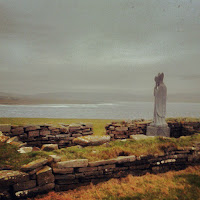Have you been given an assignment asking
you to write a letter to your younger self? I actually mentioned it in an
earlier blog post.
I was organizing files on my computer
today, when I found my portfolio from college. I found a letter that was
supposed to be in my “about me” section, but I didn’t use it because it was too
long and wordy.
It was kind of immature, but at the same
time insightful and exactly something I needed to hear. Who would’ve thought
that three years later, I would be taking advice from myself?
Writing letters to our younger selves is a
creative way to make us reflect on what we’ve learned. It’s also a way to bring
up all the “what ifs” and “I wish I would’ves” that don’t do any good.
I propose we write letters to our future
selves. Growth comes in phases depending on where we are and what we’re going
through.
We are taught in history class that we can
learn from the past because history repeats itself. It’s true in our personal
lives too. Three years ago I was at college, not knowing what to do next, or
what God had in store for me. Now, I’m about to leave Ireland, not knowing what
to do next, or what God has in store for me.
But my 22-year-old self has some advice.
“I’ve adopted the philosophy that I heard from a pastor: ‘God doesn’t care about the who, what, when, or where. He cares about the why and how.’ This is what I want you to know about me: I’m also not going to care about the who, what, when, or where. I’m going to care about why I’m making the choices I’m making, and how I’m getting there.”
What lessons are you learning that you want
your future self to remember?























